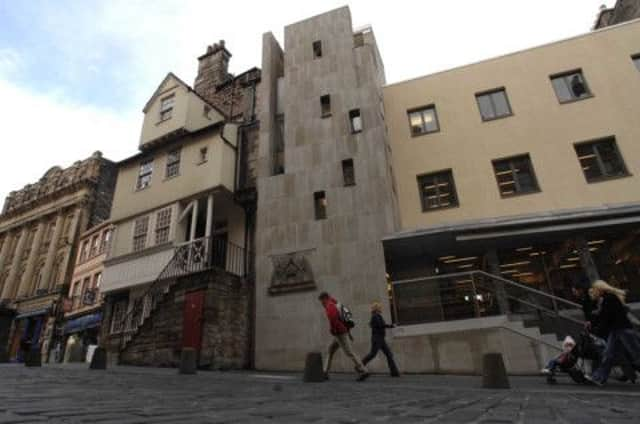Arts hub to put home of Scots literature on map


A ten-year blueprint for the middle section of the street around the historic Netherbow will see it promoted as the home of traditional culture and the heart of the city’s literary quarter. Historic buildings and closes would be restored, new works of art would be commissioned, and special events and festivals would be staged.
Tourism bodies and walking tour groups will be encouraged to throw their weight behind the area, which is little known as the birthplace of publishing in Scotland.
Advertisement
Hide AdStudies have shown that the Netherbow – which for centuries marked the main entrance into Edinburgh – is sidestepped by many visitors.
Plans are expected to be published ahead of the tenth anniversary of Edinburgh being named the first Unesco world “city of literature” in the autumn.
It is hoped the move will counterbalance the huge growth of “tartan tat” shops on the Royal Mile over the past decade and combat concerns that the Old Town is being dominated by new commercial developments.
There have been widespread concerns that arts and culture have been excluded from major new developments, including SoCo in the Cowgate, and Caltongate, on the corner of the Canongate and New Street.
The new initiative – which is expected to involve the Scottish Book Trust and the Edinburgh City of Literature Trust – would also showcase traditional music, song, dance, drama and art.
A new Netherbow Trust is expected to be set up to co-ordinate the plans, lead negotiations with bodies such as Edinburgh City Council, Edinburgh World Heritage and the Cockburn Association, and mastermind fundraising for major schemes.
Advertisement
Hide AdKey projects are likely to include restoring 15th-century Moubray House, one of the oldest buildings in the Old Town, and securing a long-term future for Trinity Apse, a former gothic church, as a performance and exhibition space.
Highlights in the area include Tweeddale Court, which has been a home to publishers for 200 years. The area is home to the site where Scotland’s first book was published in 1508 and the site of William Smellie’s 18th-century printing house, where the first edition of Encyclopaedia Britannica was published.
Advertisement
Hide AdUnder a roads shake-up currently being explored, most traffic would be diverted away from the area between Blackfriars Street and St Mary’s Street, following a successful pilot in the High Street, further up the Royal Mile. These plans have been backed in principle by the city council.
Efforts are being led by one of the city’s key cultural figures, Donald Smith, who has just stood down as director of the Scottish Storytelling Centre, but is expected to be at the heart of the regeneration programme after helping to set up a new umbrella body, Traditional Arts and Culture Scotland.
Mr Smith said he hoped the new project would emulate the success of the Old Town regeneration in the 1980s and 1990s.
He said: “We already have an amazing centre of printing and publishing here. There is also a will to carry out wider development. What we need now is for everybody to work together and agree a vehicle to take things forward. A Netherbow Trust would completely focus on the cultural character of the whole area.”
Scotland’s future inspires festival offering
SCOTLAND’s future will take centre stage in a series of events during Edinburgh’s annual showcase of traditional arts and culture, organisers have revealed.
The independence debate has inspired much of the programme for the capital’s Tradfest event, along with investigations of the extent of a cultural renaissance in Scotland and the “Celtic revival”.
Advertisement
Hide AdAuthors David Torrance and Gerry Hassan will be among those taking part in the two-week festival, which is being held for a second year. It will feature more than 80 events in 26 different venues, showcasing traditional music, dance, storytelling, theatre, folklore, visual arts and film.
Among the acts due to appear between 29 April and 11 May are Hebridean rockers Skerryvore and Edinburgh singer-songwriter Adam Holmes. Events exploring the cultural legacy of Sir Walter Scott, Hamish Henderson and Hugh MacDiarmid will also be part of the programme.